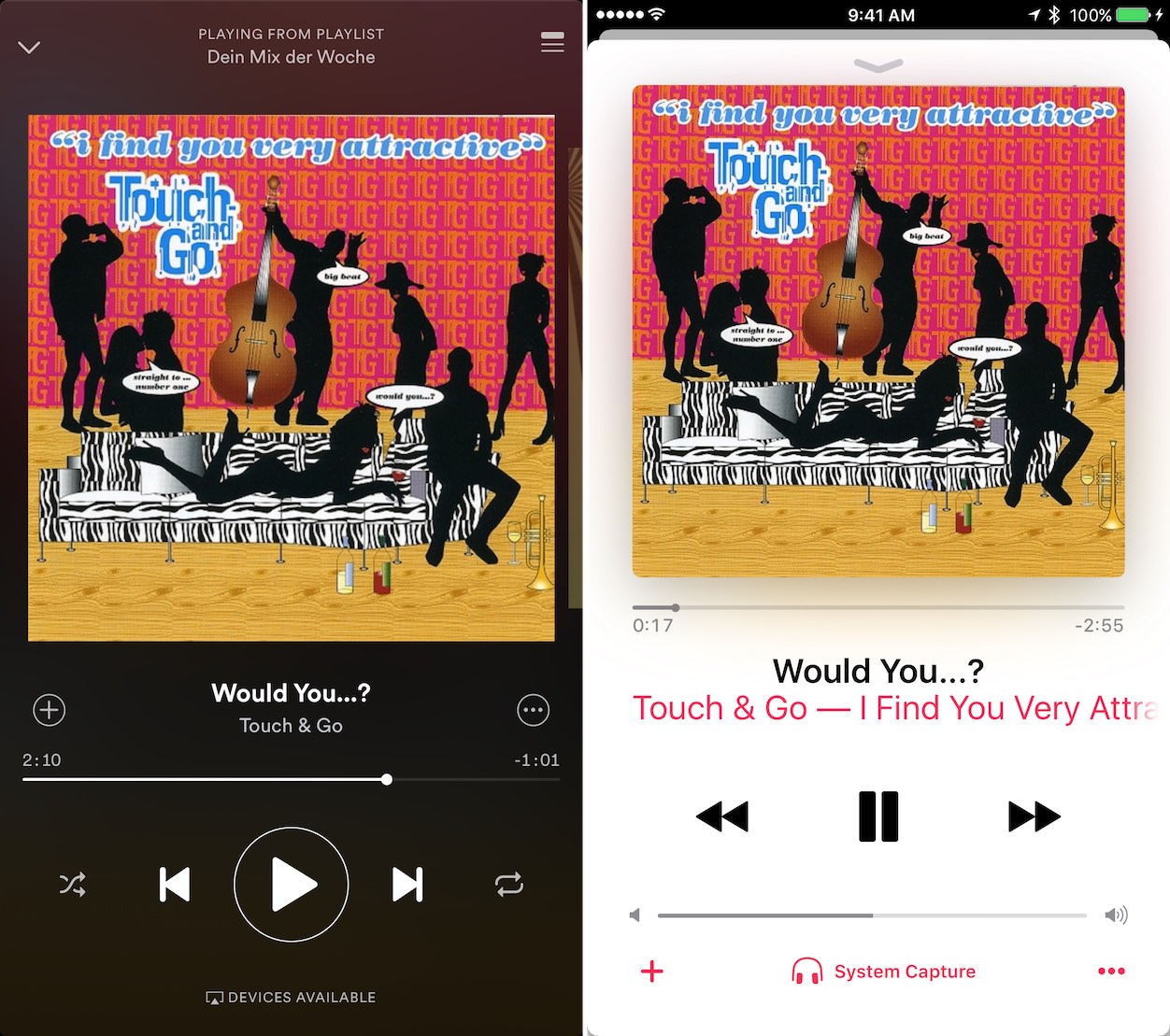Musikstreaming oder die Frage: „Was kostet Musik?“

This afternoon, Apple submitted a preliminary proposal to the U.S. Copyright Royalty Board to simplify the way music-streaming companies pay songwriters and publishers — in a way that could make it more expensive for rivals like Spotify and YouTube to keep offering free streaming.
Right now, streaming companies pay songwriters and publishers between 10.5 percent and 12 percent of their overall revenue, according to a complicated formula. (Labels and other owners of recording copyrights negotiate their own terms.) The money is divided into public performance and mechanical royalties, then paid to collecting societies and publishers.
„Apple Proposes Simplified Statutory Licensing Scheme to D.C.“
Apples Vorschlagspapier verspricht mehr Geld für Künstler, Labels und Rechteinhaber. Gleichzeitig ist es ein unmissverständlicher (zu erwartender) Schuss in Richtung werbefinanziertes Streaming, so wie es Spotify anbietet.
Ob das Copyright Royalty Board an Apples Empfehlung nach einer „fairen, simplen und transparenten“ Berechnung der Gewinnausschüttung überhaupt interessiert ist, und ob Spotify und YouTube eigene Anregungen einreichen, bliebt vorerst offen1.
Apple schlägt einen Mindestpreis von 9,1 US-Cent für 100 Song-Wiedergaben vor; Spotify zahlt im kostenlosen Tarif aktuell mit einer prozentualen Beteiligung (ohne Mindestpreis).
Der 0-Euro-Tarif, für den sich rund 70 Millionen Spotifyler entschieden haben, scheint allen Beteiligten der Musikindustrie aber mittlerweile ein Dorn im Auge. Selbst Spotify argumentiert hartnäckig mit kräftigen Rabatten, Mobilfunker-Bundles und Dauer-Promos um seine nicht-zahlenden Kunden für bezahltes Streaming zu begeistern.
Freemium proved highly valuable to Spotify in its earlier years and continues to be an important entry strategy for new markets. But last year record label execs started to observe that free just wasn’t converting at the same rate it once did in mature markets like the US. This was because most of the likely subscribers had already been converted and so the majority remaining were freeloaders who were never going to pay, and warm prospects who just couldn’t bring themselves to pay 9.99. This is where price promos come into play. They deliver the impact of mid priced subscriptions, which is enough to to hook those wavering free users. Once they get used to paying the majority tend to stick around when the price goes back up.
In meiner Wahrnehmung wirkt Spotify leidenschaftlicher – viel investierter – als das noch steife Auftreten von Apple (Stichwort: Connect), das trockene Desinteresse von Google gegenüber Musik und die überzogene Selbstgefälligkeit, die Tidal an den Tag legt. Als nomineller Marktführer sind sie gleichzeitig aber in der schlechtesten Position: Tidal ist ein klassischer Übernahmekandidat; Google, Amazon und Apple finanzieren ihre Musik-Ambitionen anders quer (und sichern sich exklusive Künstler und zeit-exklusive Rechte an Alben und Songs).
Musikstreaming zählt derzeit zirka 90 Millionen zahlende Kunden. Damit steckt es noch in den Kinderschuhen. Das Thema der Raubkopien ist auf Smartphones und Tablets gegessen. Als neue Herausforderungen erscheinen mir häufige Preisschwankungen sowie die (für Kunden nicht nachvollziehbare) Exklusivität von Alben oder Künstlern, die nur über ausgewählte Plattformen streamen.